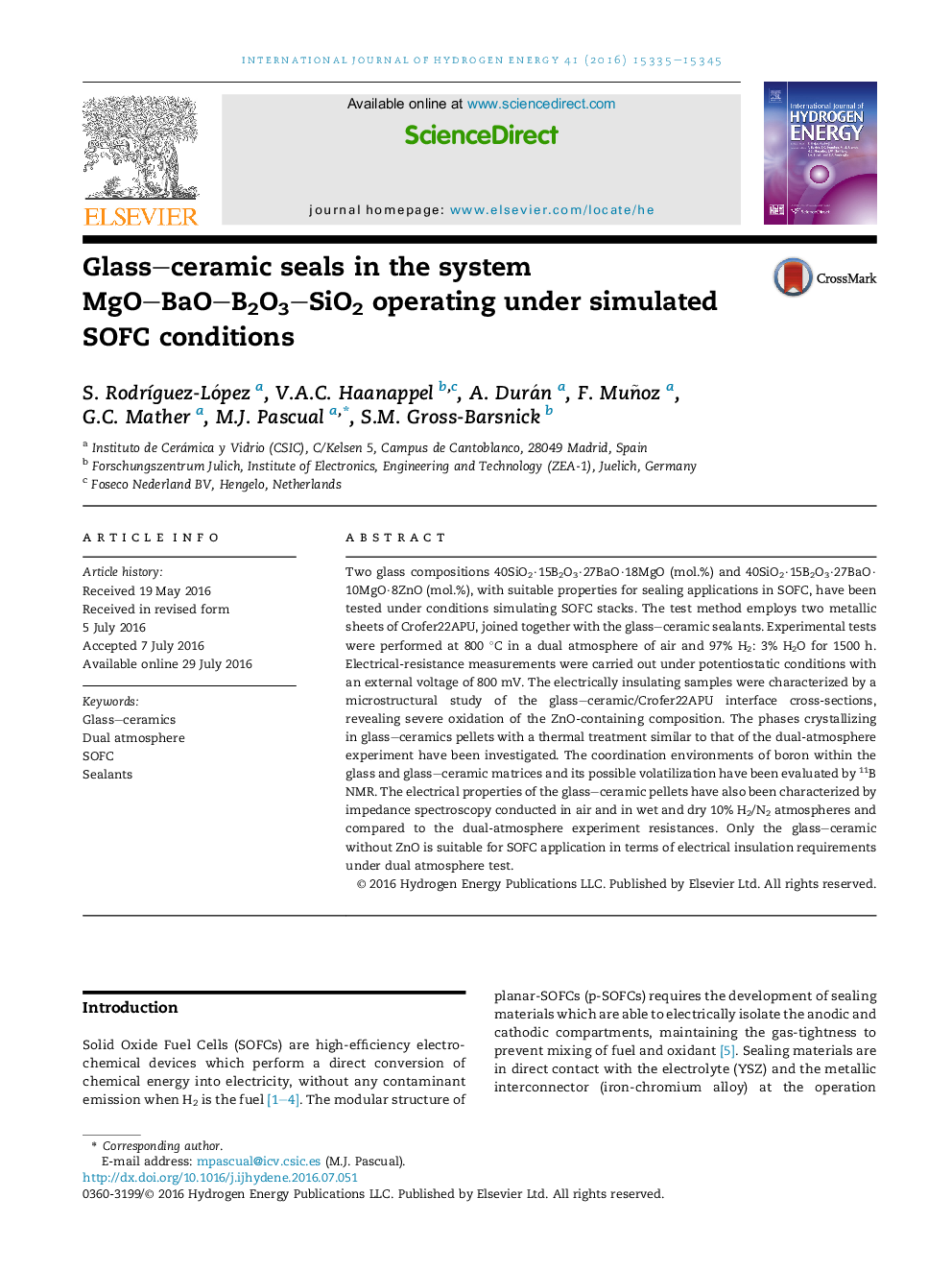| Article ID | Journal | Published Year | Pages | File Type |
|---|---|---|---|---|
| 1270412 | International Journal of Hydrogen Energy | 2016 | 11 Pages |
•Glass–ceramic seals for SOFCs with long-term stability crystalline phases.•ZnO addition lowers electrical resistance.•Resistivity requirements fulfilled in dual atmosphere test of 1500 h.
Two glass compositions 40SiO2·15B2O3·27BaO·18MgO (mol.%) and 40SiO2·15B2O3·27BaO·10MgO·8ZnO (mol.%), with suitable properties for sealing applications in SOFC, have been tested under conditions simulating SOFC stacks. The test method employs two metallic sheets of Crofer22APU, joined together with the glass–ceramic sealants. Experimental tests were performed at 800 °C in a dual atmosphere of air and 97% H2: 3% H2O for 1500 h. Electrical-resistance measurements were carried out under potentiostatic conditions with an external voltage of 800 mV. The electrically insulating samples were characterized by a microstructural study of the glass–ceramic/Crofer22APU interface cross-sections, revealing severe oxidation of the ZnO-containing composition. The phases crystallizing in glass–ceramics pellets with a thermal treatment similar to that of the dual-atmosphere experiment have been investigated. The coordination environments of boron within the glass and glass–ceramic matrices and its possible volatilization have been evaluated by 11B NMR. The electrical properties of the glass–ceramic pellets have also been characterized by impedance spectroscopy conducted in air and in wet and dry 10% H2/N2 atmospheres and compared to the dual-atmosphere experiment resistances. Only the glass–ceramic without ZnO is suitable for SOFC application in terms of electrical insulation requirements under dual atmosphere test.
